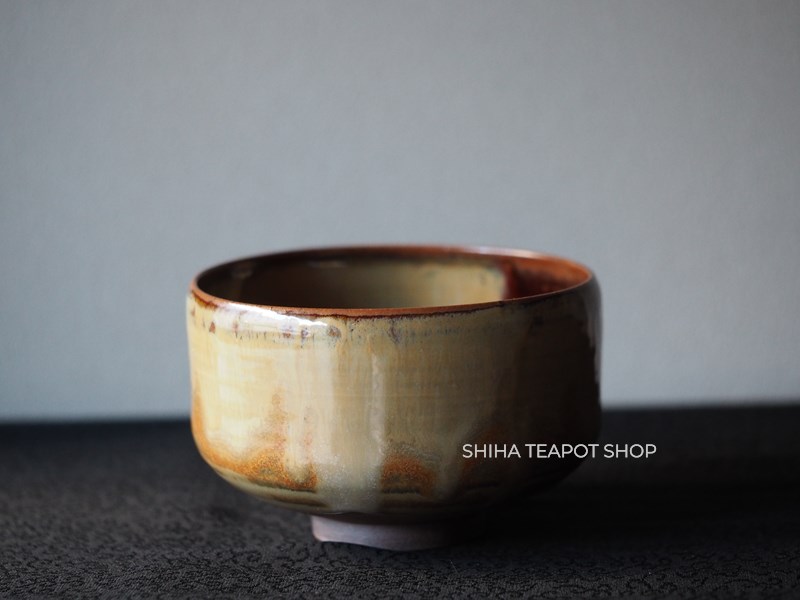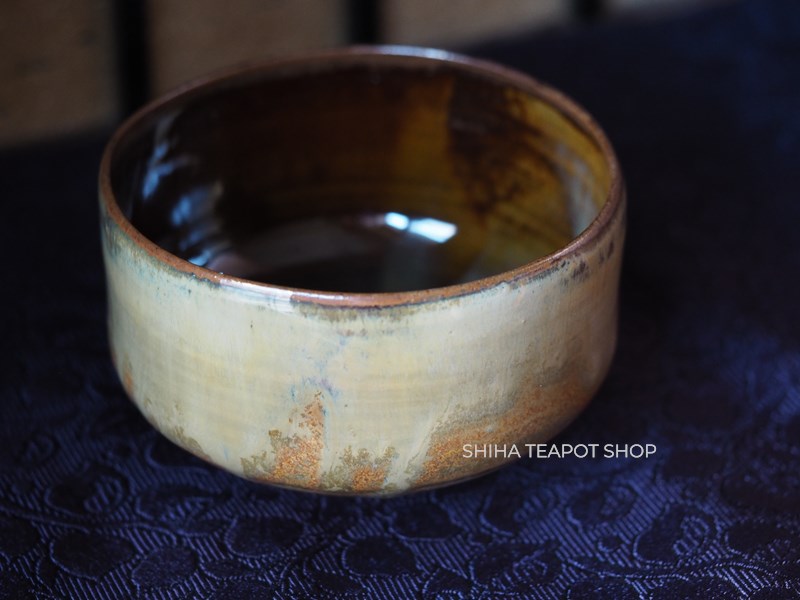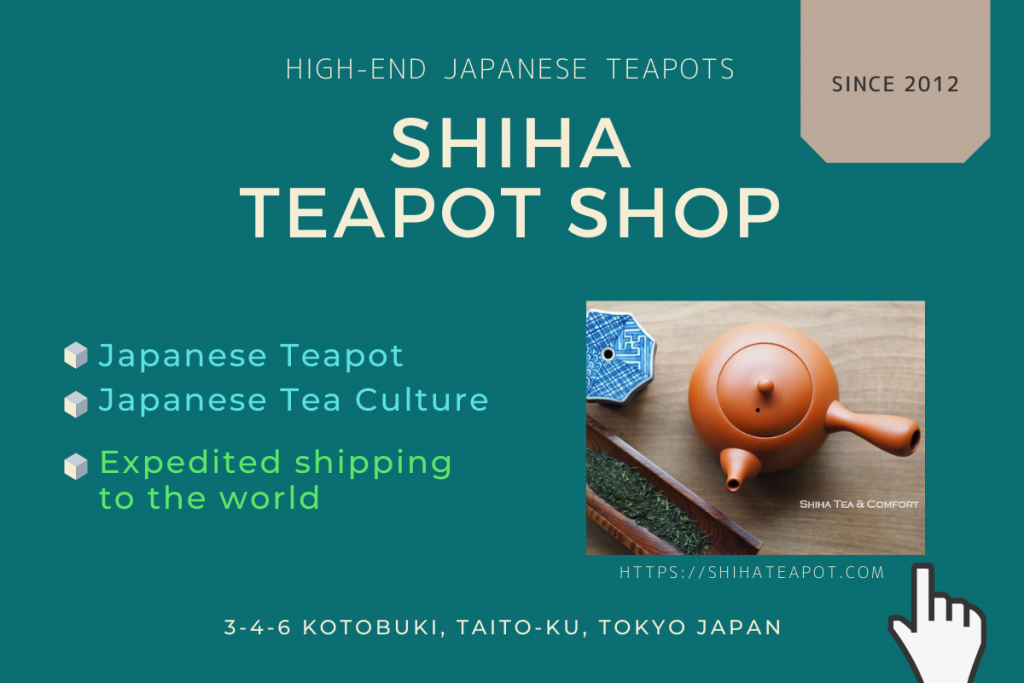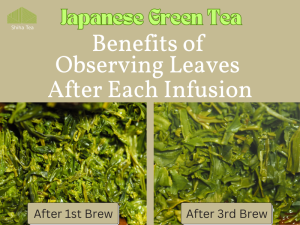Takatori Yuko Kakewake Matcha Chawan Bowl (Takatori Hassen Kiln)

Takatori Matcha bowl / Artist Takatori Yuko
This matcha bowl features a traditional and refined form. Yuko spent over 24 hours firing this piece. The milky white rice straw ash glaze on the outer surface takes on a yellowish hue due to its fusion with the iron-rich clay, which is exposed to the prolonged heat in the kiln.
As a result of the high temperature and extended firing time, a reddish tint emerged beneath the rice straw ash glaze at the lower part of the bowl.
The rice straw ash glaze was made by the Hassen family by burning rice straw nearby rice field.

Kakewake Beauty
On the inner surface, the Takatori ware technique of “kakewake” (dual glaze) is used. The beautiful, glossy amber glaze blends with the milky white rice straw ash glaze, creating a warm, earthy yellowish tone. This bowl, with its three colors, is a perfect example of Takatori ware, and the thinness of the vessel reflects a traditional characteristic of Takatori pottery.

——————————–
About Takatori-yaki
Takatori-yaki ware is a pottery originating from the tea ceremony in Fukuoka Prefecture, Japan. It began about 400 years ago and has continued to the present day.
It flourished as the official kiln of the Kuroda clan during the Edo period. Under the guidance of Kobori Enshu, a tea master of the time, tea ware for the tea ceremony was created based on the aesthetic concept of “Kirei-Sabi.”
Kirei-Sabi refers to the fusion of two contrasting elements: Kirei, which signifies beauty, brightness, and elegance, and Wabi-Sabi, which embraces rustic simplicity, imperfection, and transience. While these two aesthetics may seem contradictory, Yuko seeks to express her own unique interpretation of Kirei-Sabi through her ceramic works, harmonizing these opposing qualities within each piece.
Takatori-yaki ware is characterized by its amber glaze( brownish glaze) and milky white glaze (warabai-yū). A distinctive feature of this style is the kakewake technique, where these two glazes are applied to a single tea bowl, creating a harmonious contrast.
And the Takatoriyaki tea ware also typically features a thin and elegant body.

Takatori Yuko
Takatori Yuko was born in the 400-year-old Kiln and learned the technique from her grandfather (Takatori Hassen 13th / 高取八仙) and her father (14th, Takatori Hachinojo Funin / 八之丞不忍)
Born into a kiln that has preserved its traditions, her works have a new beauty in the deep tradition.
Takatori Yuko: Born in 1989
Clay: Koishiwara Clay of Fukuoka Japan



